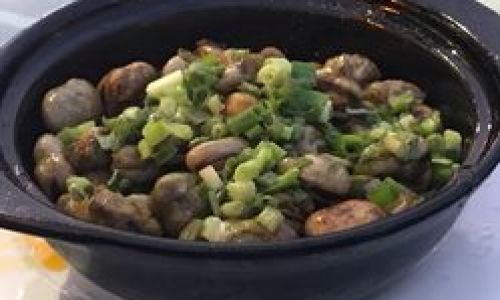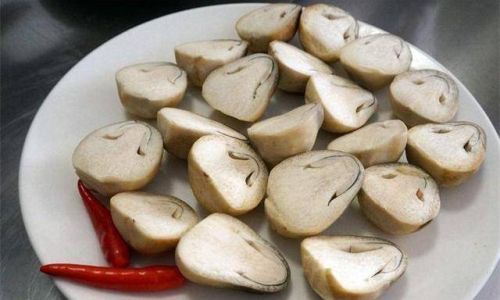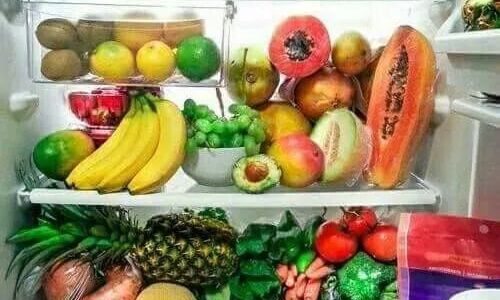Table of content
Introduction
In an era dominated by digital screens, prolonged near-work activities, and environmental stressors, maintaining optimal eye health has become a pressing concern for millions worldwide. Myopia, or nearsightedness, affects nearly 30% of the global population, with rates skyrocketing in urbanized regions. While genetics and lifestyle factors like excessive screen time play pivotal roles, emerging research underscores the profound impact of nutrition on eye health. The right dietary choices can fortify ocular tissues, reduce inflammation, and mitigate the risk of myopia progression. This article delves into the science-backed nutrients, foods, and dietary strategies that promote long-term vision wellness.
The Role of Nutrition in Eye Health
The eyes are among the body’s most metabolically active organs, requiring a constant supply of micronutrients to function optimally. Antioxidants, vitamins, and omega-3 fatty acids protect against oxidative stress—a key driver of age-related macular degeneration (AMD), cataracts, and myopia. Poor nutrition exacerbates ocular vulnerability, while a balanced diet enhances retinal integrity, supports blood vessel health, and maintains the aqueous humor’s clarity.
Key Nutrients for Eye Protection
Vitamin A and Beta-Carotene
Vitamin A is indispensable for vision, as it enables the retina to absorb light and transmit visual signals to the brain. Deficiency can lead to night blindness and dry eye syndrome. Beta-carotene, a provitamin found in orange and green vegetables, converts to vitamin A in the body, offering a safer alternative to synthetic supplements.
Food Sources:
- Sweet potatoes (1 cup provides 769% of the DV)
- Carrots (rich in lutein and zeaxanthin)
- Spinach (also high in iron for oxygen transport)
- Liver (organ meats)
- Mangoes and apricots
Vitamin C
This antioxidant neutralizes free radicals generated by UV exposure and metabolic processes. It strengthens collagen in the cornea and sclera, preventing degeneration. Studies link high vitamin C intake to a reduced risk of cataracts and AMD.

Food Sources:
- Citrus fruits (oranges, grapefruits)
- Bell peppers (especially red and yellow)
- Strawberries (1 cup = 149% DV)
- Kiwi (higher in C than oranges)
- Broccoli (also contains sulforaphane for detoxification)
Vitamin E
A fat-soluble antioxidant, vitamin E protects cell membranes from oxidative damage. It synergizes with vitamin C to combat cataract formation and slow AMD progression.
Food Sources:
- Sunflower seeds (1/4 cup = 80% DV)
- Almonds (28 nuts = 48% DV)
- Spinach (cooked)
- Avocado (also high in lutein)
- Hazelnuts
Omega-3 Fatty Acids
Docosahexaenoic acid (DHA), a long-chain omega-3, constitutes 30% of the retinal lipids. It reduces dry eye symptoms, lowers intraocular pressure, and may inhibit myopia progression in children.
Food Sources:
- Fatty fish (salmon, mackerel, sardines)
- Flaxseeds (ground for better absorption)
- Chia seeds (soak before consumption)
- Walnuts (also rich in polyphenols)
- Algal oil (vegan DHA source)
Zinc
Zinc facilitates vitamin A transport from the liver to the retina, where it aids in melanin production—a pigment shielding eyes from UV rays. Low zinc levels correlate with impaired night vision and cloudy cataracts.
Food Sources:
- Oysters (6 medium = 7400% DV)
- Pumpkin seeds (1/4 cup = 17% DV)
- Beef (grass-fed for higher CLA)
- Lentils (also high in folate)
- Cashews
Lutein and Zeaxanthin
These carotenoids accumulate in the macula, filtering harmful blue light and reducing AMD risk by 43%. They also enhance contrast sensitivity and glare recovery.
Food Sources:
- Kale (1 cup = 100% DV for both)
- Swiss chard
- Egg yolks (pasture-raised for higher nutrients)
- Corn (organic to avoid GMOs)
- Peas
Anthocyanins
Found in deeply pigmented fruits, anthocyanins improve night vision by enhancing rhodopsin regeneration. They also boost capillary stability, reducing diabetic retinopathy risks.

Food Sources:
- Blueberries (wild varieties have higher antioxidants)
- Blackcurrants (also rich in vitamin C)
- Açaí berries
- Purple cabbage
- Cherries
Dietary Patterns for Optimal Eye Health
The Mediterranean Diet
Emphasizing fish, olive oil, nuts, and vegetables, this diet lowers AMD risk by 41%. Its anti-inflammatory effects stem from omega-3s, polyphenols, and fiber.
The DASH Diet
Originally designed for hypertension, DASH (Dietary Approaches to Stop Hypertension) reduces oxidative stress through magnesium, potassium, and calcium. It benefits glaucoma patients by lowering intraocular pressure.
Plant-Based Diets
Vegan and vegetarian diets, when carefully planned, provide ample lutein, zeaxanthin, and vitamin C. However, B12 and DHA supplementation may be necessary to avoid deficiencies.
Foods to Limit or Avoid
- Processed Sugars: Elevate blood glucose, contributing to cataract formation via glycation end-products.
- Trans Fats: Found in fried foods and margarine, these impair omega-3 absorption and increase AMD risk.
- Excessive Alcohol: Depletes antioxidants and raises cataract risk by 32% in heavy drinkers.
- High-Glycemic Carbs: White bread, pasta, and sugary snacks exacerbate myopia in children by spurring axial elongation of the eyeball.
Practical Tips for Incorporating Eye-Healthy Foods
- Start with a Colorful Plate: Aim for 50% non-starchy vegetables at meals. Roast kale chips with olive oil or blend spinach into smoothies.
- Snack Smart: Pair almonds with dark chocolate (70% cocoa) for a zinc-antioxidant combo.
- Hydrate Strategically: Drink green tea (rich in catechins) and bone broth (for collagen).
- Cook with Care: Steaming vegetables preserves nutrients better than boiling.
- Consider Supplements: If dietary intake is low, opt for AREDS2-formulated vitamins (for AMD patients) or vegan DHA from algae.
Lifestyle Synergies for Myopia Management
- 20-20-20 Rule: Every 20 minutes, look 20 feet away for 20 seconds to reduce eye strain.
- Outdoor Time: Natural light exposure in childhood may slow myopia progression by stimulating dopamine release.
- Blue Light Filters: Use software like f.lux or blue-light-blocking glasses during screen use.
- Regular Eye Exams: Early detection of refractive errors prevents complications.
Special Considerations for Children and Myopia
Myopia often develops between ages 6–14, making early nutrition critical. Ensure children consume:
- Wild-caught salmon twice weekly (or DHA-fortified foods)
- Fortified plant milks (for calcium and vitamin D)
- Berries as daily snacks
- Limited screen time (<2 hours/day for under-5s)
Conclusion: A Holistic Approach to Vision Preservation
While no single food can reverse myopia, a nutrient-dense diet rich in antioxidants, omega-3s, and vitamins forms the cornerstone of eye health. Pairing this with lifestyle adjustments—such as outdoor activities and ergonomic screen habits—creates a robust defense against vision loss. As research evolves, it’s increasingly clear that the adage “you are what you eat” holds true for the delicate tissues of the eye. By prioritizing whole foods and mindful living, individuals can safeguard their vision for decades to come.
Final Note: Consult an ophthalmologist for personalized advice, especially if experiencing rapid myopia progression or symptoms like floaters or blurred vision. Nutrition is a complement to—not a substitute for—medical care.
Word Count: 1,520






0 comments